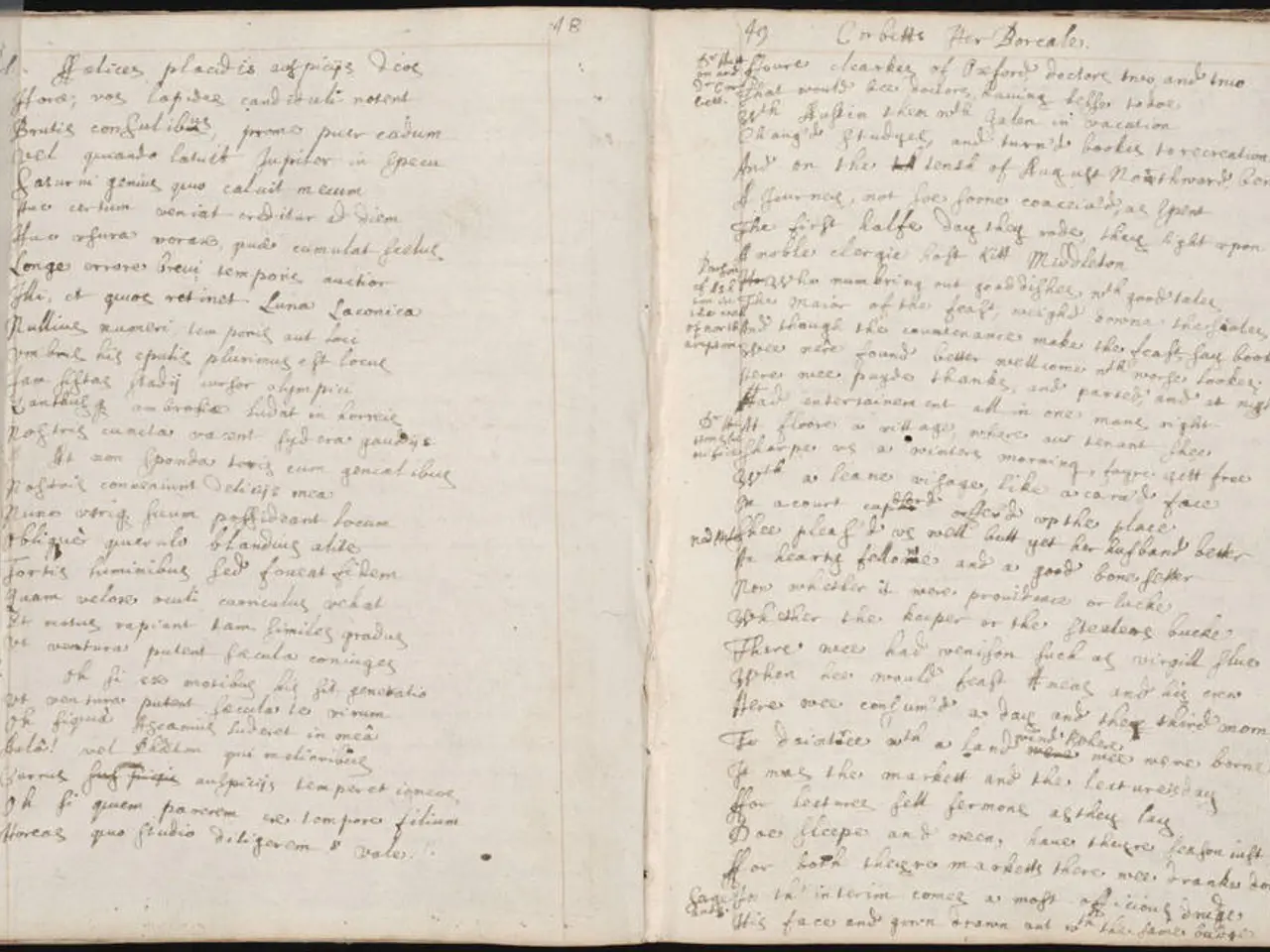Attendee's Account of the 13th United States National Combustion Gathering
In the realm of academic research, open-ended assignments can often seem daunting, but they can also provide unexpected opportunities for growth and learning. Agnes Robang, a researcher, recently shared her experience in this area, focusing on the benefits of tackling an open-ended assignment - in her case, building a cannon for a class.
Agnes' experience highlights the value of embracing challenges and the importance of clear and concise content. She emphasises the need to focus on presenting main findings and key points clearly, avoiding clutter and using bullet points and concise text to ensure readability. Highlighting the significance of your research early on is also crucial to engage viewers.
Effective visual design is another essential aspect of open-ended assignments, as demonstrated by Agnes' work. She uses large, legible fonts and contrasting colours for easy reading from a distance. Incorporating high-quality figures, graphs, and images that directly support your message is also crucial. Maintaining a logical flow, usually top-to-bottom and left-to-right, helps guide viewers through your work naturally.
Preparation for interaction is another key element. Agnes prepared a brief (1–2 minute) elevator pitch summarising her research for quick engagement. Anticipating questions and rehearsing clear, succinct answers is just as important. Being ready to discuss the broader implications and context of your work can help engage your audience and foster meaningful conversations.
Professional presentation is another vital aspect. Arriving early to set up your work neatly and troubleshoot any last-minute issues is essential. Dressing professionally conveys seriousness and confidence, and standing by your work during scheduled sessions helps engage with attendees actively.
Networking and follow-up are also crucial components of open-ended assignments. Using the opportunity to network by exchanging contact information with interested peers and experts can lead to future collaborations. Having business cards or digital contact options ready is a must. Following up after the assignment to continue collaborations or discussions is also essential.
Finally, learning from experience is key. Reflecting on feedback received during the presentation can help improve future assignments. Observing other presenters’ techniques and poster designs for inspiration can provide valuable insights and help refine your approach.
Agnes' experience underlines the importance of preparation, clarity, and active engagement for a successful open-ended assignment. Whether it's building a cannon or presenting a research poster, the principles remain the same - embrace the challenge, be clear and concise, and engage with your audience.
The principles Agnes demonstrated in her open-ended 'junior paper' emphasize the importance of personal-growth and learning, as she highlighted the significance of preparation, clarity, and active engagement. In her continued education-and-self-development, she focused on the benefits of tackling such assignments, such as networking and follow-up, learning from experience, and effective visual design, all of which contribute to personal-growth and the main findings of her learning process.




